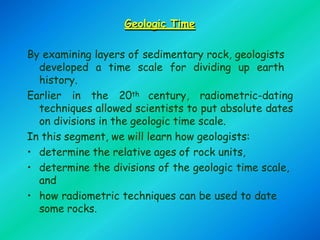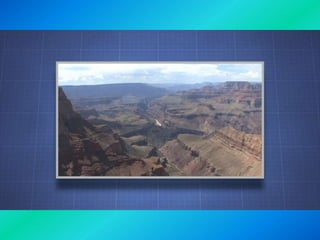The document discusses geologic time and methods used by geologists to determine the relative and absolute ages of rocks. It provides information on:
1) Principles of relative dating used to determine the ordering of rock layers, such as superposition and cross-cutting relationships.
2) Radiometric dating techniques that allow scientists to determine the absolute age of rocks in years by measuring the decay of radioactive isotopes.
3) How these methods have been used to develop the geologic time scale which divides Earth's history into eons, eras, periods and epochs.
























